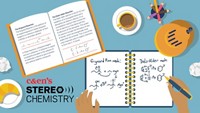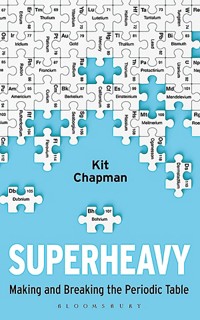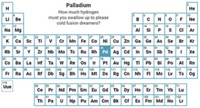Advertisement
Grab your lab coat. Let's get started
Welcome!
Welcome!
Create an account below to get 6 C&EN articles per month, receive newsletters and more - all free.
It seems this is your first time logging in online. Please enter the following information to continue.
As an ACS member you automatically get access to this site. All we need is few more details to create your reading experience.
Not you? Sign in with a different account.
Not you? Sign in with a different account.
ERROR 1
ERROR 1
ERROR 2
ERROR 2
ERROR 2
ERROR 2
ERROR 2
Password and Confirm password must match.
If you have an ACS member number, please enter it here so we can link this account to your membership. (optional)
ERROR 2
ACS values your privacy. By submitting your information, you are gaining access to C&EN and subscribing to our weekly newsletter. We use the information you provide to make your reading experience better, and we will never sell your data to third party members.
Biological Chemistry
Naming Issues
by Bibiana Campos Seijo
January 11, 2016
| A version of this story appeared in
Volume 94, Issue 2
Welcome to C&EN’s second issue of the year. This is the first one that allows an editorial—the Jan. 4 issue instead included a special message from incoming ACS President Donna J. Nelson—so I’d like to take this opportunity to wish you a happy and prosperous 2016.
This holiday period has been one of uncertainty for employees of Dow and DuPont, and I want to ask that we all spare a thought for those who may be affected by the job cuts and their families. With 5,400 expected to lose their jobs at DuPont facilities worldwide and about one-third of these—1,700 people—coming from Delaware, the U.S. will be hard-hit by these staff reductions. We are all bound to know someone or of someone who’s received the bad news, and however inevitable or crucial to the success of the merger these are, the layoffs are a hard pill to swallow. C&EN’s Alex Tullo continues to follow the merger closely and has more on the future of R&D at DuPont on page 5.
But I’d like to change topics to the issue of selecting a name. Naming someone or something is a difficult thing to do. As a parent you buy naming books, have discussions with friends and family who secretly hope that the baby is named after them, and after changing your mind several times you settle on something that is likely to have a lukewarm reception because no name will please everyone.
I had a number of discussions about this during Pacifichem after the launch of ACS’s newest journal: ACS Omega. Nothing extraordinary or unexpected here: Some people loved it, some people hated it, most remained neutral. But over the years I have learned that selecting a product’s name is an involved, time-consuming, and often frustrating process. You can be sure that there will be as many proposed naming conventions as people involved in a given project, and it often takes months of negotiation and diplomacy to agree to a final version.
So I really feel for the folks at the International Union of Pure & Applied Chemistry who have all of this to come, times four. With the official announcement that the seventh row of the periodic table is now full comes the task of naming elements 113, 115, 117 and 118 (see page 6). Whatever they settle on, I hope they do not take a leaf out of Glenn Seaborg’s book. According to a recent National Geographic blog post titled “An 80-Year-Old Prank Revealed, Hiding in the Periodic Table,” Seaborg, one of the greatest chemists of all time and the only to have an element named after him while still alive, was playing a prank on all of us when he selected the abbreviation to represent element 94 (plutonium). Interestingly, rather than selecting Pl, which would have been the obvious choice, he decided on Pu.
According to the writer, and this seems to have been confirmed by Seaborg’s son, he selected P and u because they sounded like Pee-yoo!—the words that a child might use if something smelled bad.
Whether this is true or an urban myth, it shows that scientists have a “fun” side. Indeed, a petition calling for one of the new elements to be named “Lemmium” after Motörhead lead singer Ian (Lemmy) Kilmister has already collected more than 97,000 signatures. Lemmy, who is widely credited with inventing heavy metal music, died on Dec. 28, 2015.
And it’s not exclusive to chemists. Examples of quirky name selections abound in biology too, for example, where there are genes named sonic hedgehog, Groucho, lunatic fringe, smurf, headcase, or fear of intimacy (yes, really!).
The unfortunate side of this “fun” side is that sometimes these genes are linked to diseases, and so a name that is cute when referring to a gene in a fruit fly is suddenly far less appealing when it affects humans and has to be dealt with in the clinic. So I hope the job of naming these four elements is taken seriously. They will be there for posterity.
Views expressed on this page are those of the author and not necessarily those of ACS.





Join the conversation
Contact the reporter
Submit a Letter to the Editor for publication
Engage with us on Twitter